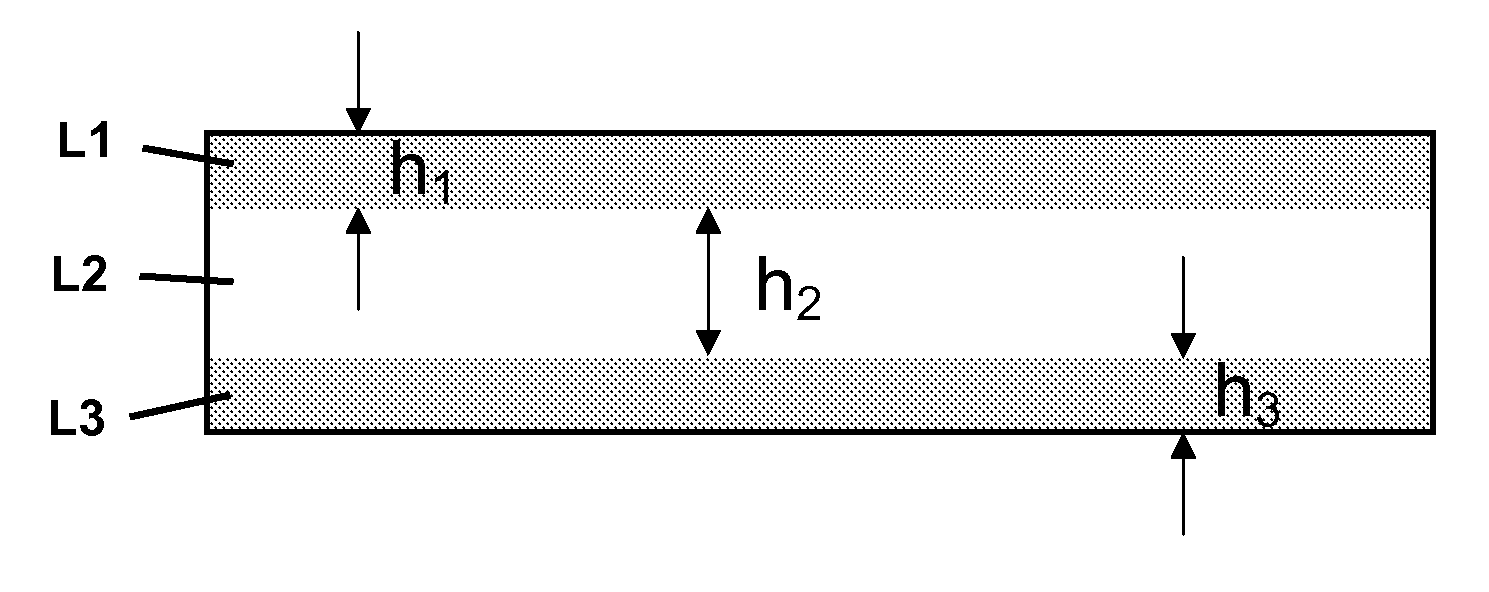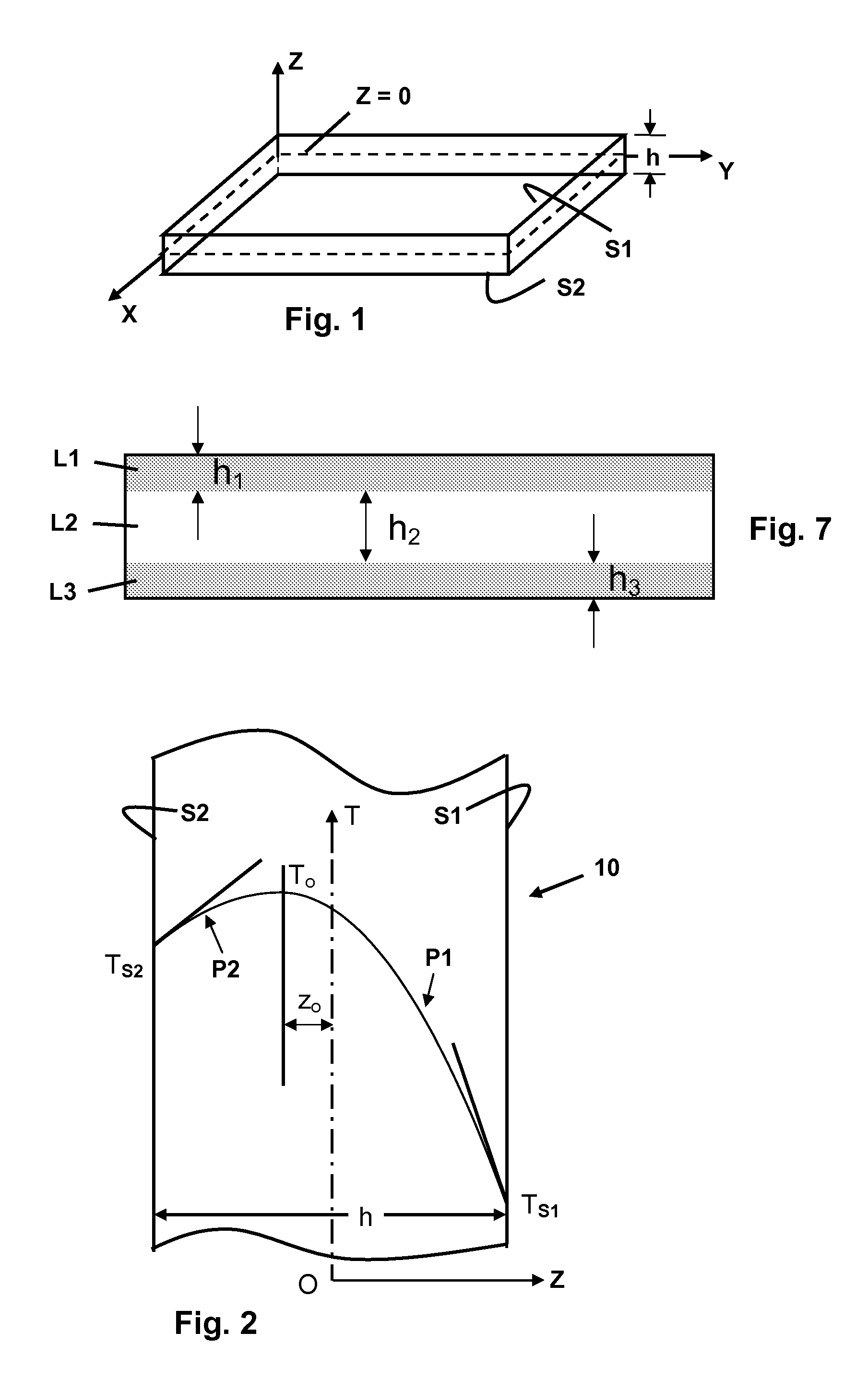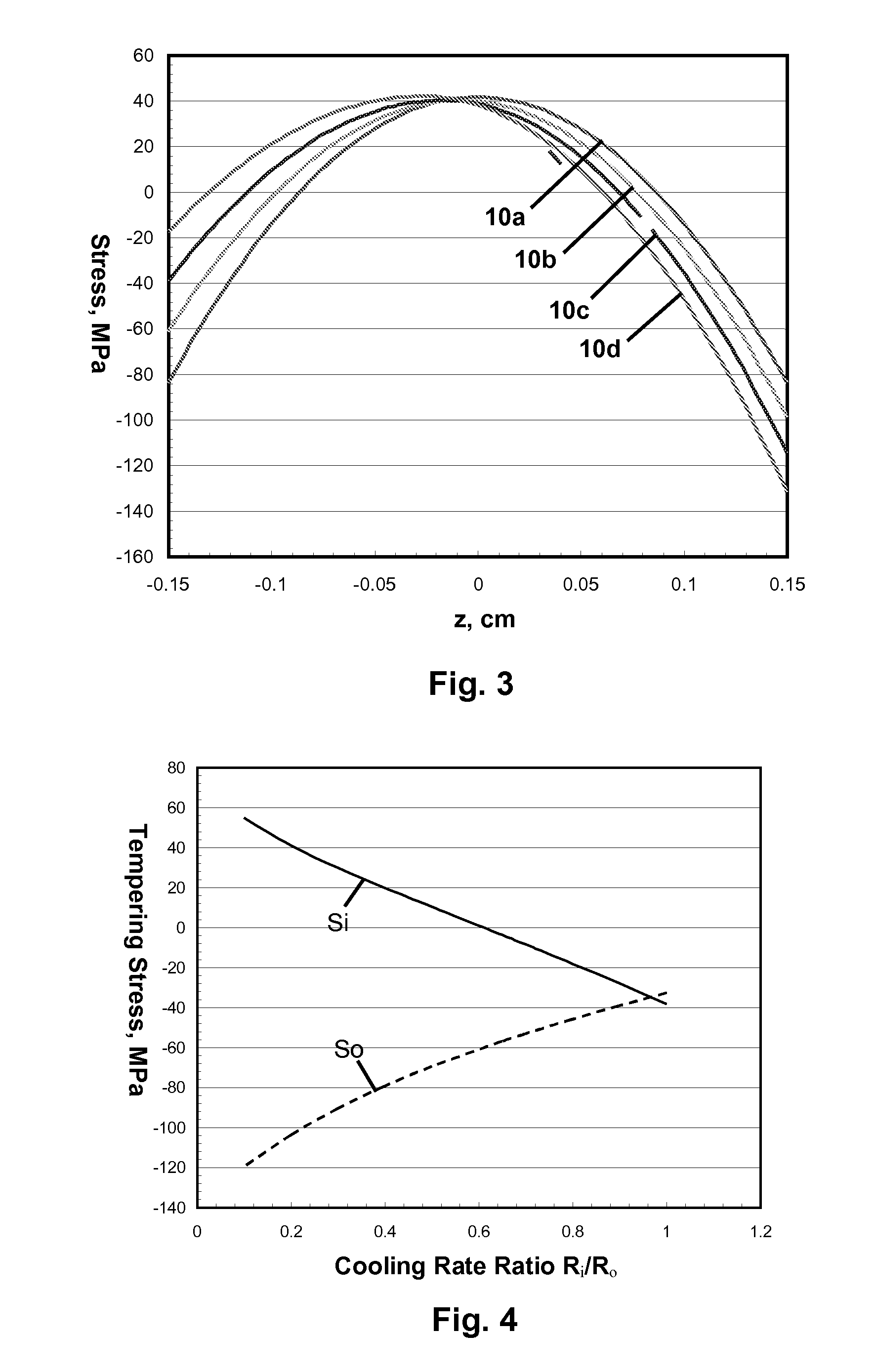Damage-resistant glass articles and method
- Summary
- Abstract
- Description
- Claims
- Application Information
AI Technical Summary
Benefits of technology
Problems solved by technology
Method used
Image
Examples
Embodiment Construction
[0017]In general, the commercial tempering of silicate glass articles of plate and tube configuration involves the symmetric cooling of the articles from temperatures above the transformation range of the glass to room temperature. The resulting stress profiles are parabolic through the thickness of the article, with levels of surface compression being about twice the level of central tension. The magnitude of the central tension depends linearly on the cooling rate R and thermal expansivity α′ of the glass, quadratically on the thickness t of the glass, and inversely on the thermal diffusivity k of the glass, with the depth of the resulting surface compression layers being about 21% of the thickness t. In certain embodiments according to the present disclosure, glass articles with opposing compressively stressed surfaces of differing compressive stress level are provided through asymmetric thermal tempering, such that both major surface portions of the articles are thermally temper...
PUM
| Property | Measurement | Unit |
|---|---|---|
| Pressure | aaaaa | aaaaa |
| Tensile stress | aaaaa | aaaaa |
| Temperature | aaaaa | aaaaa |
Abstract
Description
Claims
Application Information
 Login to View More
Login to View More - R&D
- Intellectual Property
- Life Sciences
- Materials
- Tech Scout
- Unparalleled Data Quality
- Higher Quality Content
- 60% Fewer Hallucinations
Browse by: Latest US Patents, China's latest patents, Technical Efficacy Thesaurus, Application Domain, Technology Topic, Popular Technical Reports.
© 2025 PatSnap. All rights reserved.Legal|Privacy policy|Modern Slavery Act Transparency Statement|Sitemap|About US| Contact US: help@patsnap.com



